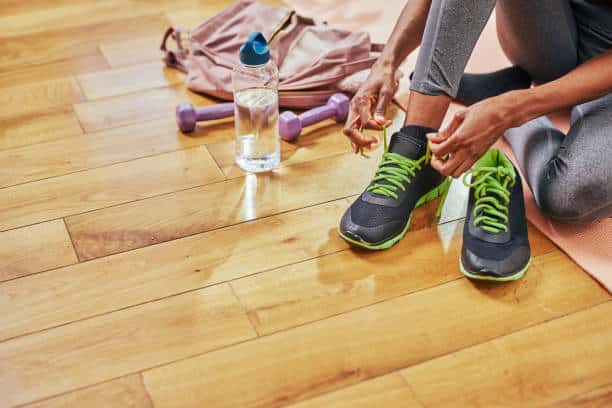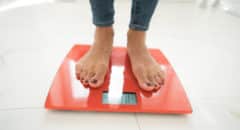
Doctors often recommend walking to anyone who needs to manage their weight. If done regularly, though, walking is more than just a weight loss tool. It can contribute to your overall wellness and improve your health significantly. While some people think walking is just a gateway to other forms of exercise, you may be shortchanging your health if you give up walking for something else. A better idea is to find ways to increase the intensity of your usual walking routine so you reap even better benefits.
5 Ways You Can Get More Out of Your Walk
1. Practice Interval Training
Interval training isn’t just for the gym. With walking, you can incorporate faster intervals. Doing so can burn more calories than a regular walk, and you may finish it in a shorter period or cover more distance in the same time. If you’re just starting out, consider walking a normal pace for a couple of minutes and then walking briskly for a minute. Over time, you can reduce the amount of time you spend walking regularly while increasing how long you walk briskly. The aim is to strike a balance that increases your heart rate but gives your body time to recover. A good fitness tracker app can help you to set an interval training walk routine so you’re not occupied with timing your intervals.
The key to adding interval training effectively is paying attention to your body. It might be tempting to aim for the fastest pace and the longest time, but it’s okay to work your way up to that. If you’re having trouble breathing while walking or have to stop entirely after a brisk pace, then you may be pushing too hard.
2. Use Walking Poles
With this option, you would use Nordic walking poles while walking at your regular pace. To intensify your workout, you would mimic skiing, where you use a full arm swing and push-off motion to move forward. Using the poles gives your upper body and core muscles more of a workout than you would get from a regular walk. A recent study even suggests that using Nordic walking poles may burn more calories than a high-intensity interval training (HIIT) routine.
This form of walking may be particularly helpful for older adults because of the emphasis on balance. Furthermore, the increased aerobic workout can do wonders for your heart and for building your lung capacity.
RELATED: 3 Ways Walking in Nature Can Sharpen Your Mind
3. Wear a Weighted Vest
According to some trainers, a weighted vest is a great way to intensify your walk while keeping the same pace. Adding some weight turns the workout into a bit of a strength training exercise, which can be great for anyone who needs to build muscle. Additionally, it can help you to maintain your bone mass as you’re losing weight.
If you’re going to use a weighted vest for the first time, try it out for 10-15 minutes on a short, slow walk. This will establish how well you can manage it. You should also ensure that you’re using one that’s about 10 percent of your body weight when starting out. There are also a few things to bear in mind when choosing a vest.
Some of them have flexible weights so you can increase the weight you use over time. However, these aren’t as stable as the vests that have a set weight. When using vests, you should opt for lightweight clothing as you may sweat more than usual, and cushioned, stable shoes to support your ankles.
Most importantly, you should ask your doctor if a weighted vest is right for you. If you have a back or neck injury, a heart condition, or chronic joint issues, the vest may make things worse. You also shouldn’t wear one every time you walk, as your body needs time to recover.

4. Add Small Weights
Don’t worry if a weighted vest isn’t in the cards for you. Taking small dumb bells with you can help to build muscle while you walk as well. Better yet, as you advance, you can do different aerobic exercises while you walk. Using one to three pounds at the beginning gives you a chance to build up to heavier weights when you’re ready.
Some people opt for small ankle weights, as those will specifically strengthen your leg muscles. They can help you burn calories while walking at a slow pace. Older adults can also benefit from using ankle weights, as they help improve balance and gait. However, you should be careful if you choose these, as they can also affect your balance and put a strain on your legs.
5. Take it Uphill
This is one of the simplest ways to increase the intensity of your walk. Walking uphill or downhill engages different muscle groups compared to walking on a flat surface. That’s because you’re pushing against gravity to make progress. If you’re having trouble with your joints, then a slight incline can help with burning calories without hurting those joints.
To try this one out, consider choosing a small hill nearby so it’s still easy for you to get home. If you’re not sure about leaving the house, then walking up and down stairs can help, or using an incline setting on a treadmill.
RELATED: Walking Your Way to Better Health? Remember the Acronym FIT
Why Ramping Up Is a Good Idea
Your doctor may recommend walking to combat the symptoms associated with several different conditions. That includes being overweight, strengthening your muscles, improving your balance, strengthening your bones, strengthening your heart, improving your lung capacity, and losing fat that can lead to chronic illness. Being physically active can also help prevent specific conditions such as stroke, heart disease, high blood pressure, type 2 diabetes, and certain types of cancer.
And that’s not all. Research shows that walking regularly can also have some unexpected health benefits. It can improve your mood, reduce your likelihood of having depressive episodes, increase your energy levels, reduce your stress levels, and boost your immune system. Interestingly, being active may not only burn calories, but it can also counteract the effects of your genes that promote weight gain and calm your sweet tooth.
If you’ve been walking for a while, though, it may feel as if you’ve plateaued, so it’s natural to feel that you need to challenge yourself. Fortunately, just because your routine has gotten monotonous, it doesn’t mean you have to stick to the same one. Instead of moving away from walking, doctors suggest making your walk a little more demanding. That’s because the health benefits only increase with your level of activity.
Of course, you should always consult your doctor before taking on strenuous activity. Even if they recommended walking for your health, it’s useful to know if there are any limits you need to adhere to while working out. There may be other ways to increase the intensity of your workout without affecting your health.
Walking is often described as a great activity for beginners. That doesn’t mean you should ditch it as soon as you reach a certain level of fitness, though. Instead, doctors suggest making changes to your usual routine to make things more challenging. As long as you get the go-ahead from your doctor, your body and mind will thank you for making the effort.







